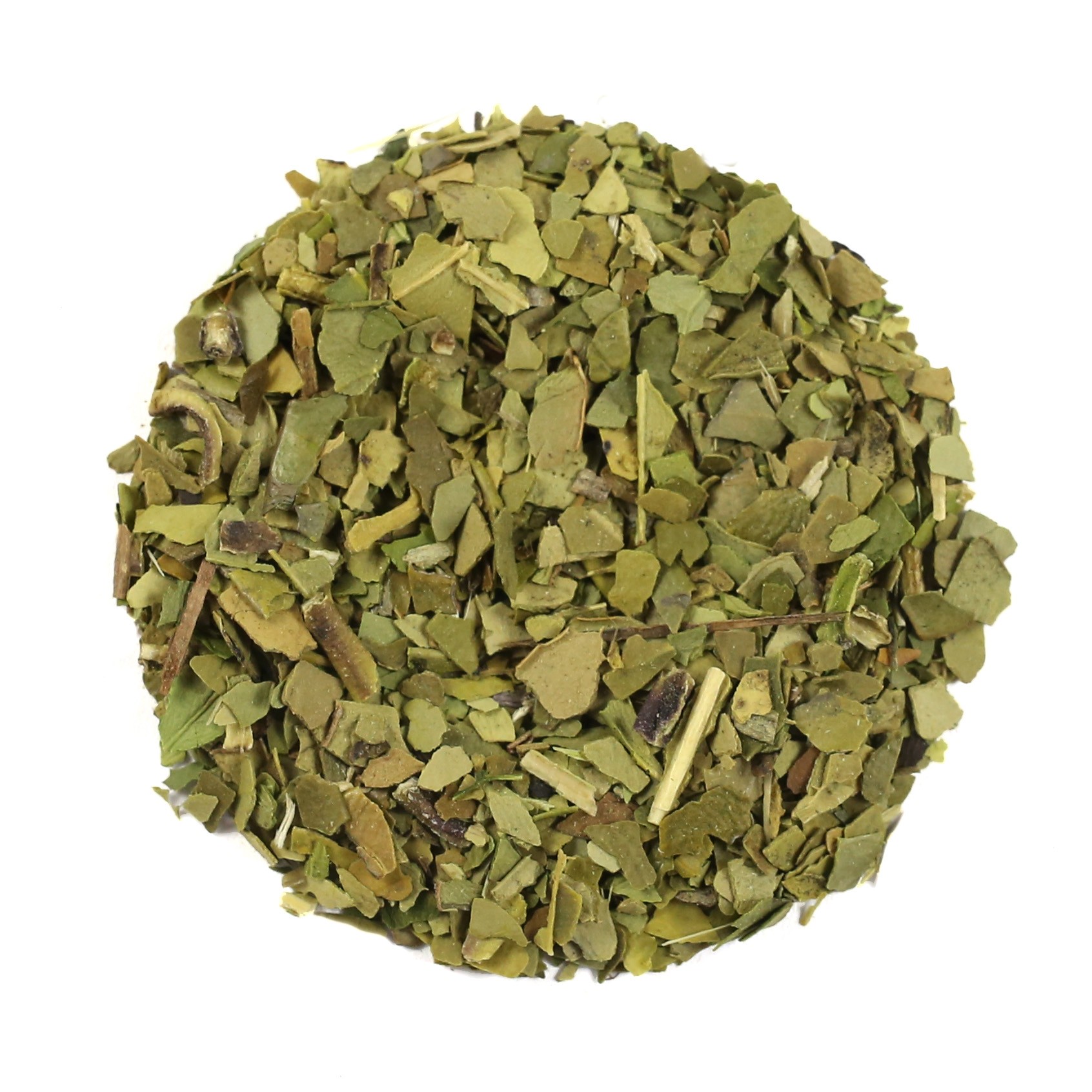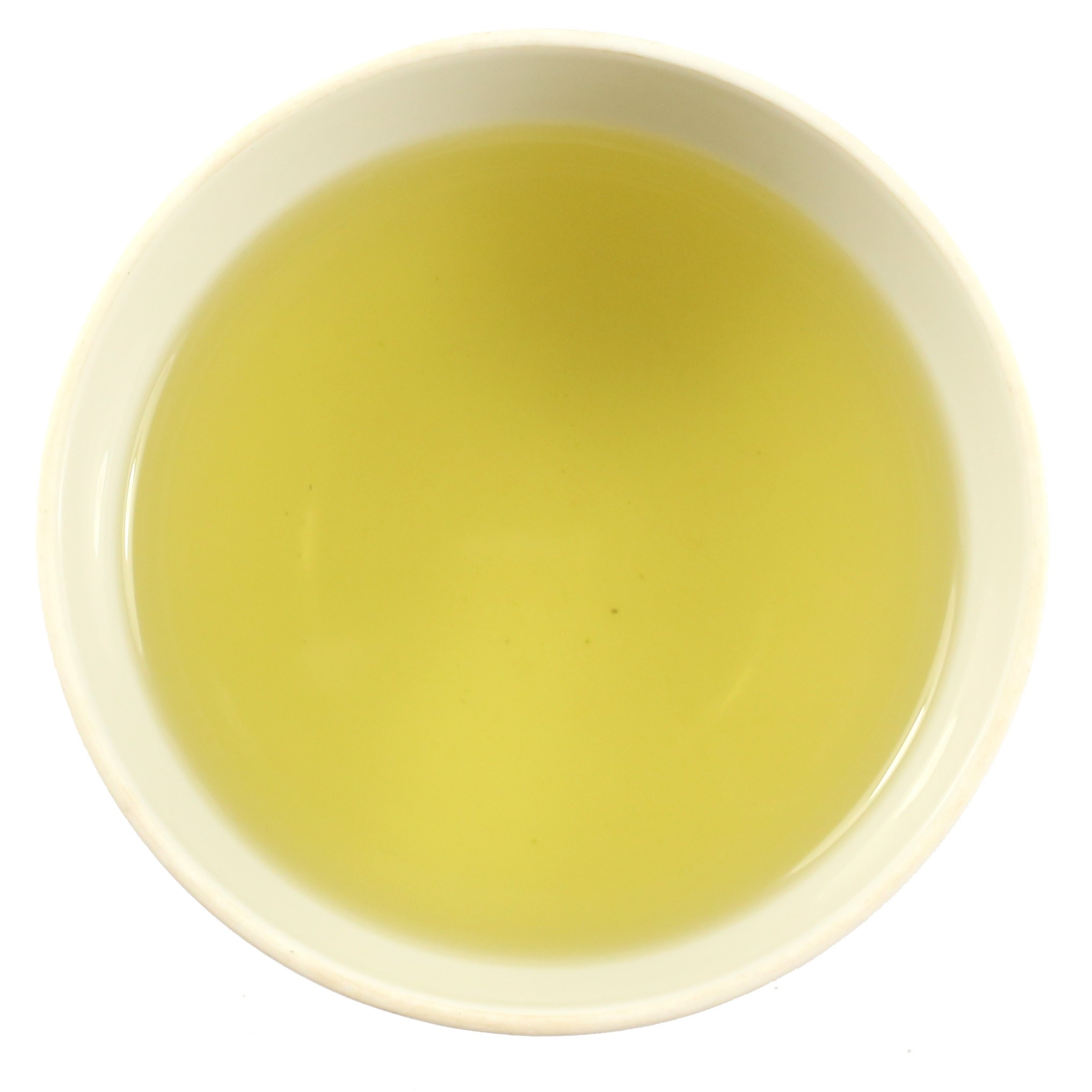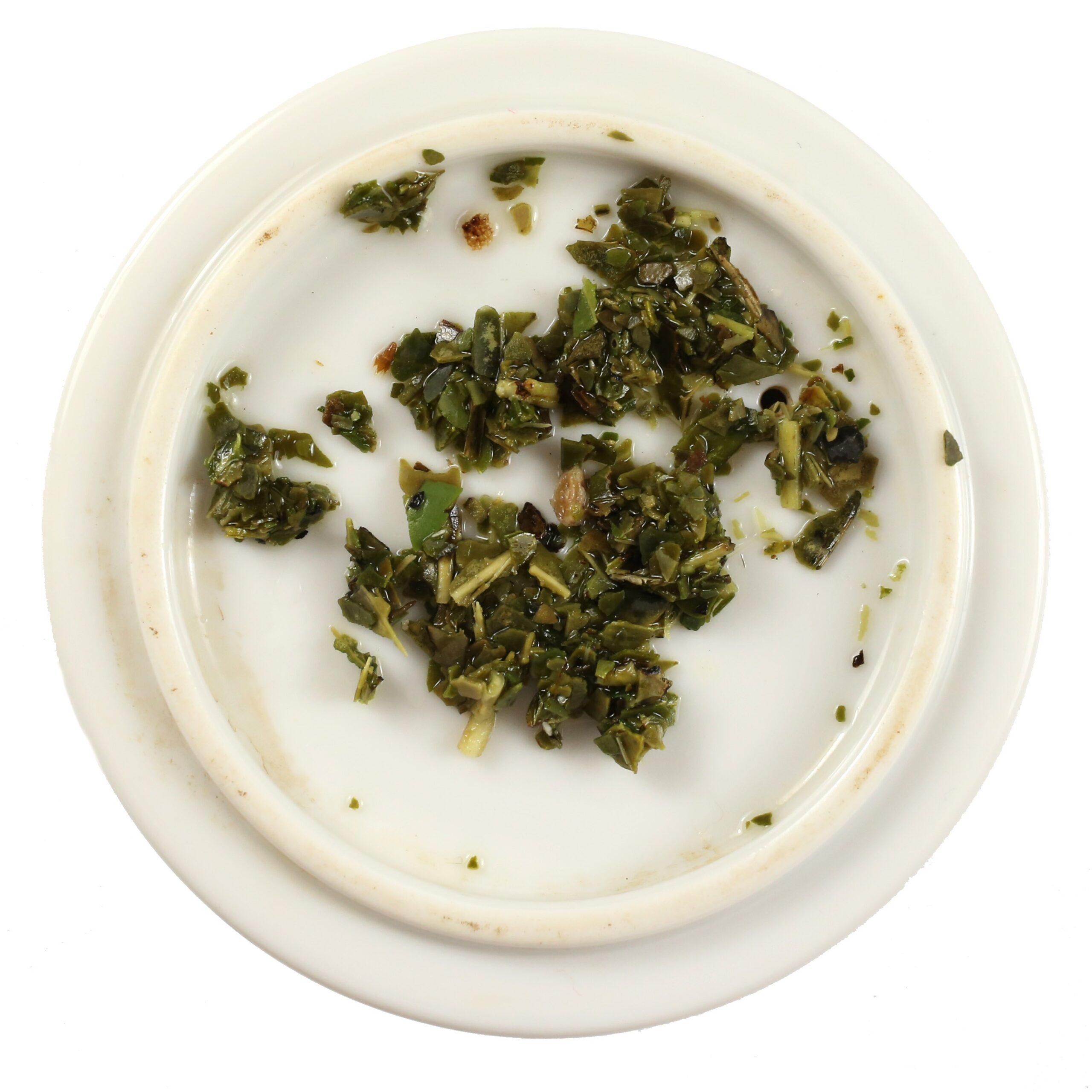Herbal Tea Brewing Guide

1 Teaspoon
Add 1 teaspoon per person and one for the pot.

95⁰c - 100⁰c
Boil using fresh water, at a temperature of 95⁰ - 100⁰c.

8 - 10 Mins
Steep for 8-10 minutes, depending on personal preference.
About Product
-
Product Description
Yerba Mate Tea, a traditional beverage originating from South America, is gaining considerable recognition in the UK for its unique flavour and impressive health benefits. Steeped from the dried leaves of the Yerba Mate plant, this loose leaf tea offers a distinctive, robust flavour, falling between the spectrum of coffee and traditional tea.
Its numerous health benefits make it a great alternative to caffeinated beverages. In addition to providing a healthy boost of energy, packed with antioxidants which can help support your overall well-being and reduce the risks of various illnesses. It also aids in digestion, helps to stave off fatigue, and has even been known to positively influence mental clarity!
What is Yerba Mate Tea
A reverently celebrated infusion is derived from the naturally caffeinated leaves of the South American rainforest holly tree, Ilex paraguariensis. Native to the subtropical highlands of Brazil, Paraguay, Uruguay, and Argentina, this unique plant thrives in humid areas with rich, fertile soil.
The cultivation process begins with the planting of Yerba Mate seeds which grow into tall, elegant trees reaching up to 15 meters in height if left unchecked. However, for commercial purposes, the plants are pruned to a manageable size for harvesting. The leaves are hand-picked by skilled harvesters, known as ‘Tareferos’, who embark on this labour-intensive task with a deep respect for the plant and its environment.
Once picked, the leaves go through an intricate process to retain their nutritional value while developing the distinctive flavour Yerba Mate Tea is revered for. This involves a drying phase under direct heat, a method known as ‘sapecado’, followed by a slower drying process to reduce moisture content.
The leaves are then aged in a careful and controlled environment to deepen the flavours. The resultant is then ready to be steeped, creating a beverage that is both rich in heritage and health benefits.
Yerba Mate History
The history of this tea is as rich and robust as the beverage itself. It begins with the indigenous Guarani people in South America who were the first to discover the enlivening effects of it centuries ago.
They revered the plant as a ‘gift from the gods’ and used it in traditional rituals, medicine, and as a communal drink to foster a sense of connection and fellowship. The Guarani people introduced Spanish colonists to the plant in the 16th century, sparking the beginning of it’s global journey.
The Spanish colonists quickly developed a fondness for the energising drink, and by the 17th century, Yerba Mate had become a lucrative commodity in the South American trade market.
Jesuit missionaries played a significant role in the commercial cultivation of Yerba Mate, developing systematic plantations and pioneering practices that improved the plant’s growth and yield. Their advanced methods were so effective that even after their expulsion from South America in the late 18th century, their agricultural practices continued to be employed in cultivation.
In the 19th century, it began to be consumed more widely in Brazil and Argentina, not just as an energising beverage but as a symbol of hospitality and friendship. Sharing a gourd of Yerba Mate tea, known as a ‘mate’, became a ritualistic practice, a sign of trust and fellowship.
In the contemporary era, its popularity has expanded beyond South America and has taken root in various parts of the world, including in the UK. The health-conscious movement of the 21st century has catapulted Yerba Mate into the spotlight as a natural, nutritious alternative to caffeine.
It’s not just the unique taste that attracts a modern audience, but its impressive health benefits and the cultural history it embodies. Today, we find Yerba Mate not only as a leaf tea but also as a key ingredient in energy drinks and nutritional supplements, highlighting its adaptability and relevance in the modern era.
How to Make Yerba Mate Tea Using a Gourd and a Bombilla
Making Yerba Mate Tea using a gourd and bombilla is more than just a drink, it’s an experience. This traditional method of preparing and consuming the infusion, known as ‘cebado’, has been passed down for centuries and practised in millions of households.
To begin, you’ll need:
- 1 Gourd- 1 Bombilla
- 2 teaspoons of the leaves
- Hot water (just below boiling point)
Using the back of a spoon, fill your gourd with two teaspoons of loose leaf Yerba Mate and add hot water up to one inch from the rim. Insert the bombilla at an angle and stir gently until all the tea is submerged. Now, leave it to infuse for 2 minutes by which time the flavour should be fully released.
Finally, sip your infusion through the bombilla and enjoy its unique flavour!
Best enjoyed in a communal setting. Inviting friends or family to join you in sampling this traditional beverage will not only deepen your bond but also amplify its healing effects.
Tasting Notes: Its fragrant aroma is accompanied by earthy undertones with hints of pepper and spices that come alive when brewed.
Caffeine Content: One cup of Yerba Mate Tea contains about 75mg of caffeine, slightly less than the 85mg found in an average cup of coffee.
Yerba Mate Benefits
Offers a wealth of health benefits, many of which have been scientifically substantiated. Combining a distinctive taste with a plethora of medicinal properties, this remarkable beverage provides a healthier, natural alternative to caffeinated drinks.
From aiding digestion and promoting mental clarity to supporting weight loss and boosting the immune system, the merits of it are manifold. We invite you to read more about the Yerba Mate Tea Benefits on our blog to understand why this South American treasure is gaining recognition worldwide.
We hope you’ll give it a try, and experience the delightful burst of flavours and energising health benefits it has to offer. With its unique taste and rich cultural history, this special infusion is sure to make an amazing addition to your daily beverage selection! So why wait? Buy your Yerba mate loose leaf tea today.
-
Delivery Information
We offer reliable delivery services through Royal Mail to ensure that your orders reach you on time.
Here are the main points you should be aware of:
- Standard UK Delivery: £3.95 excluding delivery charge.
- Delivery Times: Orders are processed and dispatched within 2-5 working days but they may take longer during busy times. It is worth noting that all our orders are packed by hand in order to maintain the quality.
- Free Delivery: We are delighted to provide free shipping for UK orders over £35*. Moreover, customers from Europe can enjoy free shipping for any purchase above €75*. Furthermore, we offer free delivery in the USA for all purchases exceeding $125*. Please note terms and conditions may apply.
- Tracking: When your package is sent you will receive a tracking number via email so as to keep tabs of its progress.
International Shipping
We do ship worldwide meaning our products can be accessed by anyone around the world.
Here are some important details:
- Delivery Times: International deliveries vary based on destination, generally taking between 7-14 working days.
- Shipping Costs: International shipping costs are calculated at checkout based on your location and weight of your order. View full delivery charges for your location.
- Customs and Import Duties: Remember customs or import duties may exist depending on regulations in your country; these charges are borne by the customer.
Returns Policy
Your satisfaction is our top priority, however if for any reasons you’re not completely happy with your purchase, simply follow our returns procedure:
- Eligibility: Items returned within 30 days of receipt must remain unopened and in their original condition.
- Process: In order to return an item contact our customer service department using your unique order number after which detailed instructions will be given concerning returning them back to us securely.
- Refunds: Our aim is to refund you within 5-7 working days upon successful reception of returned goods. The refund amount will be credited to your original payment method.
For any other Enquiries or help please contact our Customer Support Team always at your service.
-
Product Reviews

 Loose Leaf Tea
Loose Leaf Tea Pyramids
Pyramids Tea Bags
Tea Bags Africa
Africa Assam
Assam Ceylon
Ceylon Chinese
Chinese Darjeeling
Darjeeling European
European Indian
Indian Japan
Japan Nepal
Nepal South East Asia
South East Asia Ayurveda Tea
Ayurveda Tea Black Tea
Black Tea Chai Tea
Chai Tea Flowering Tea
Flowering Tea Fruit Tisanes
Fruit Tisanes Green Tea
Green Tea Herbal Tea
Herbal Tea Matcha Tea
Matcha Tea Oolong Tea
Oolong Tea Organic Tea
Organic Tea Pu erh Tea
Pu erh Tea Rooibos Tea
Rooibos Tea White Tea
White Tea Asian Coffee
Asian Coffee Caribbean Coffee
Caribbean Coffee Central American Coffee
Central American Coffee South American Coffee
South American Coffee Coffee Blends
Coffee Blends Decaffeinated Coffee
Decaffeinated Coffee Espresso Coffee
Espresso Coffee Ethically Sourced Coffee
Ethically Sourced Coffee Flavoured Coffee
Flavoured Coffee Organic Coffee
Organic Coffee Single Origin Coffee
Single Origin Coffee Chocolate 1
Chocolate 1 Chocolate 2
Chocolate 2 Chocolate 3
Chocolate 3 Chocolate 4
Chocolate 4 Chocolate 5
Chocolate 5 Chocolate 6
Chocolate 6 Chocolate 7
Chocolate 7 Chocolate 8
Chocolate 8 Chocolate 9
Chocolate 9 Loose Tea Filters
Loose Tea Filters Tea Accessories
Tea Accessories Tea Bricks
Tea Bricks Tea Caddies
Tea Caddies Tea Caddy Spoons
Tea Caddy Spoons Tea Gift Ideas
Tea Gift Ideas Tea Infusers
Tea Infusers Tea Strainers
Tea Strainers




